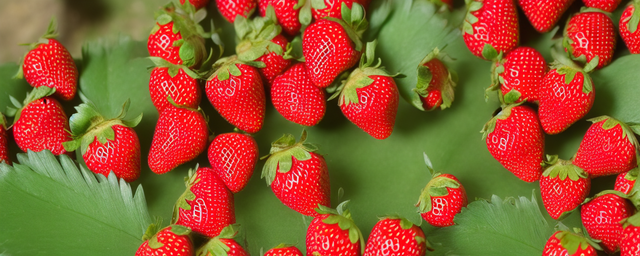
种草莓印的危害
原|2024-04-25 12:41:48|浏览:58
Planting strawberries can have several potential hazards and drawbacks that gardeners should be aware of. Here are some of the risks associated with growing strawberries:
1. **Pests and Diseases**: Strawberries are susceptible to various pests and diseases, including aphids, spider mites, slugs, and fungal infections like powdery mildew and gray mold. Controlling these issues may require the use of chemical pesticides, which can harm beneficial insects and contaminate the environment.
2. **Soil Depletion**: Growing strawberries in the same soil year after year can deplete nutrients and lead to soil exhaustion. This can result in poor plant growth and lower yields unless proper soil management practices are implemented, such as crop rotation and adding organic matter.
3. **Weed Competition**: Weeds can compete with strawberry plants for nutrients, water, and sunlight, reducing their growth and productivity. Manual weeding or herbicide use may be necessary to keep weeds under control, which can be time-consuming and potentially harmful to the environment.
4. **Watering and Drainage Issues**: Improper watering practices, such as overwatering or inadequate drainage, can lead to root rot and other moisture-related problems in strawberry plants. Maintaining proper soil moisture levels and ensuring good drainage are essential for healthy plant growth.
5. **Chemical Residues**: Commercially grown strawberries are often treated with synthetic pesticides and fertilizers, which can leave chemical residues on the fruit. Consuming strawberries with high pesticide residues may pose health risks, especially for children and pregnant women.
6. **Allergies and Sensitivities**: Some individuals may be allergic or sensitive to certain compounds found in strawberries, such as salicylates or histamines. Consuming strawberries can trigger allergic reactions or exacerbate existing health conditions in susceptible individuals.
7. **Environmental Impact**: Large-scale strawberry cultivation can have negative environmental impacts, such as habitat destruction, water pollution from runoff, and greenhouse gas emissions from agricultural practices. Sustainable farming methods and responsible land management can help mitigate these effects.
In conclusion, while growing strawberries can be a rewarding and enjoyable experience, it is essential to be aware of the potential hazards and take steps to minimize risks to both the environment and human health. Implementing sustainable gardening practices, using natural pest control methods, and choosing organic strawberries can help reduce the negative impacts associated with strawberry cultivation.
猜你喜欢
- 茶的分类及代表品种
- 六大茶类的代表名茶分别有
- 茶的类型和代表
- 六大茶叶的分类及产地
- 庙的分类及代表
- 藻的分类及其代表
- 茶的分类及代表茶品特点
- 茶的分类及代表茶
- 简述茶类的分类及其代表性名茶
- 六大茶类的分类及代表茶
- 动物分类及代表
- 糖的分类及代表
- 茶的分类及代表茶叶
- 茶的分类及代表图
- 茶的分类及代表作
- 茶器按质地的分类及代表茶器
- 茶的分类及代表名茶教学设计
- 简述茶的分类及代表性名茶
- 请写出乌龙茶的分类及代表茶
- 法国雅文邑白兰地系列
- 雅文邑白兰地介绍
- 1952年法国雅文邑白兰地
- 法国雅玛邑白兰地
- 纽波利顿獒
- 法国犬品种
- 南非獒犬的优缺点
- 波尔多獒犬寿命
- 波兰狩猎犬
- 波尔多犬和罗威纳犬对比
- 波尔多犬和杜高对比
- 世界十大凶犬
- 护卫犬排行榜前十名
- 大红袍怎么泡效果好
- 大红袍怎么泡不开
- 大红袍怎么泡茶
- 大红袍怎么泡出来没颜色
- 大红袍怎么泡不苦
- 大红袍怎么泡多久
- 大红袍怎么泡才正确的特点
- 大红袍怎么泡没有柴味儿
- 大红袍怎么泡放多少合适
- 花香大红袍怎么泡
- 大红袍怎么泡茶好
- 大红袍是怎么泡的
- 大红袍怎么泡水好喝
- 大红袍用玻璃杯怎么泡
- 大红袍怎么泡味道浓一些
- 十大排名果花茶
- 十大花茶组合排名
- 十大花茶品种大全
- 十大花茶功效
- 十大花茶销量排行榜
- 十大花茶有哪些
- 十大花茶品种
- 十大花茶推荐
- 十大花卉排行榜
- 十大花卉
- 十大花茶调理内分泌
- 九五至尊秦昊明月关山
- 红茶冲泡工艺
为你推荐






































































